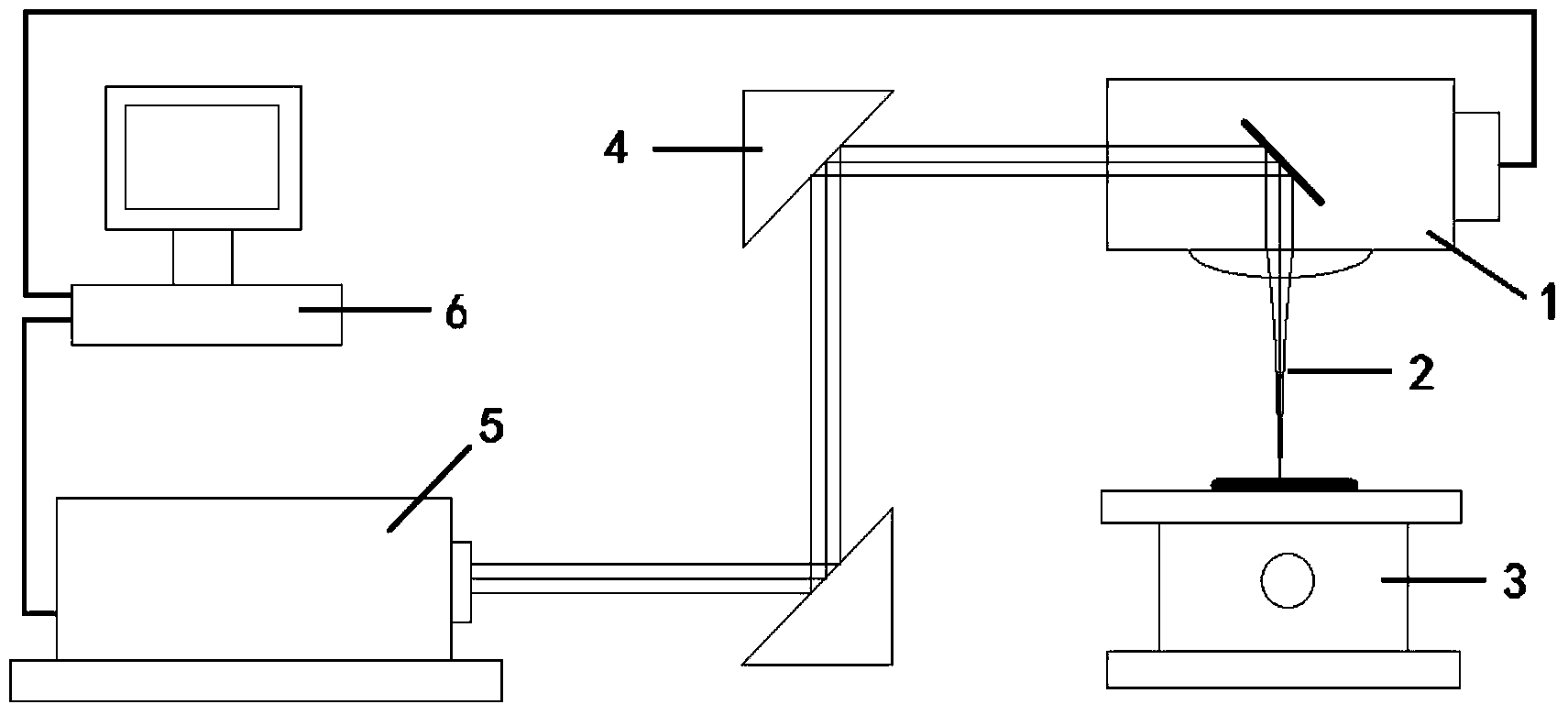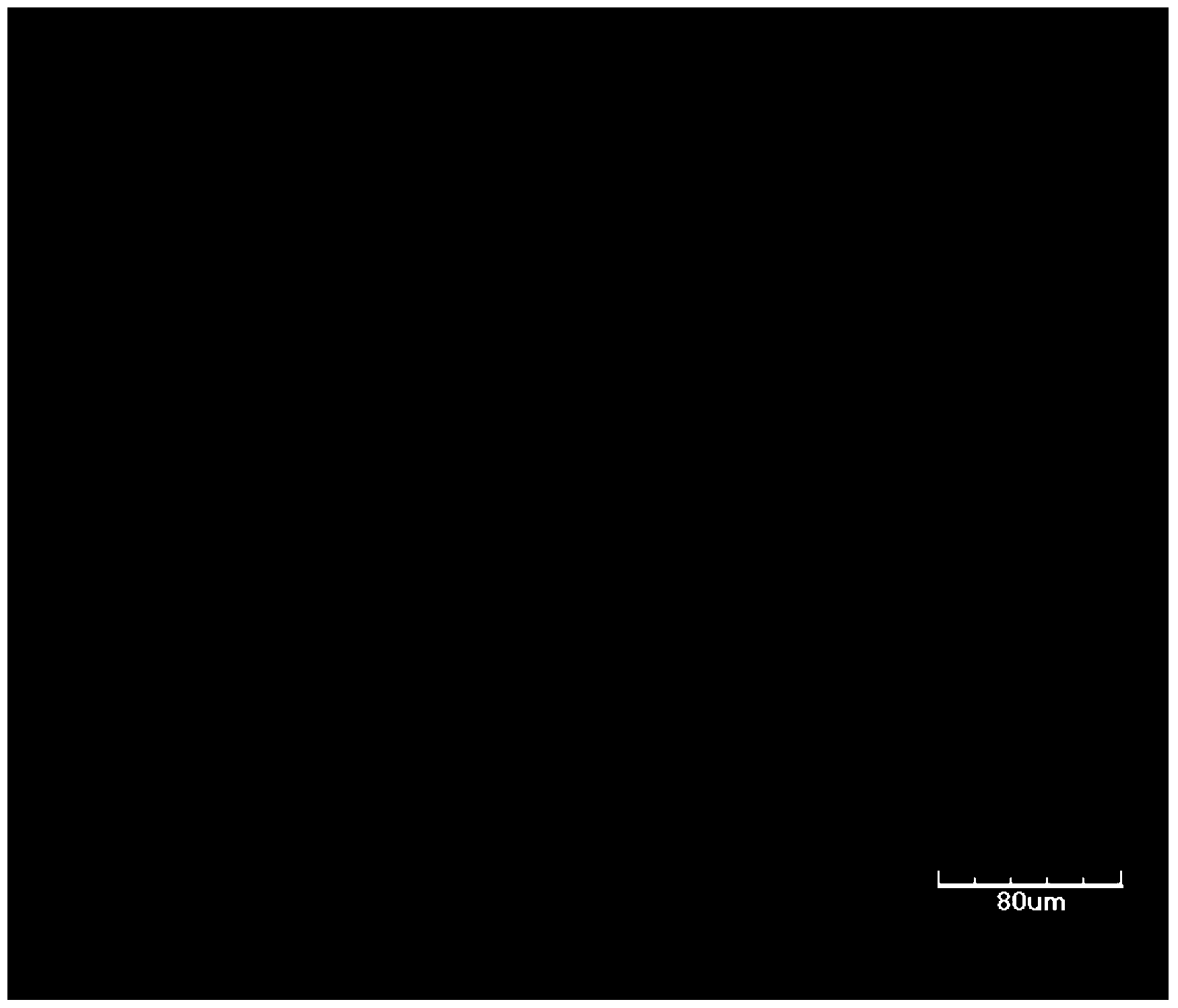Method for enabling PTFE (Polytetrafluoroethylene) or FEP (Fluorinated Ethylene Propylene) surface to have super-hydrophobic and underwater high reflective properties simultaneously
A PTFE, high reflective technology, applied in the direction of manufacturing tools, welding equipment, laser welding equipment, etc., to achieve the effect of good stability of surface properties
- Summary
- Abstract
- Description
- Claims
- Application Information
AI Technical Summary
Problems solved by technology
Method used
Image
Examples
example 1
[0023] This example uses A three-band picosecond laser (1.064μm / 532nm / 355nm) was used as the processing light source. Its main technical parameters are as follows: wavelength output: 1.064μm / 532nm / 355nm; red light output: maximum pulse repetition frequency: 2MHz; maximum pulse energy: 80μJ; pulse width 10ps; beam quality M 2 =1.3; pulse energy stability 2%rms. Picosecond laser processing system such as figure 1 shown. The surface microstructure of the processed material was characterized by a laser confocal microscope (Olympus LEXT OLS3000), and the surface superhydrophobicity of the processed sample was measured by a contact angle meter (OCA20). The material used is British The 0.5mm thick polytetrafluoroethylene (PTFE) sheet produced by the company.
[0024] The specific operation steps are as follows: Adjust the optical path so that the indicating light passes through the galvanometer, passes through the converging lens, and projects onto the workbench. Fix the poly...
example 2
[0026] This example uses Picosecond lasers are used as processing light sources. 1064nm wavelength output: maximum pulse repetition frequency: 2MHz; maximum pulse energy: 80μJ; pulse width 10ps; beam quality M 2 =1.3; pulse energy stability 2%rms. Picosecond laser processing system such as figure 1 shown. The surface microstructure of the processed material was characterized by a laser confocal microscope (Olympus LEXT OLS3000), and the surface superhydrophobicity of the processed sample was measured by a contact angle meter (OCA20). The material used is British The 0.5mm thick fluorinated ethylene propylene resin (FEP) sheet produced by the company.
[0027] The specific operation steps are as follows: Adjust the optical path so that the indicating light passes through the galvanometer, passes through the converging lens, and projects onto the workbench. Fix the fluorinated ethylene propylene resin sheet on the workbench, and adjust the height of the workbench so that...
PUM
 Login to View More
Login to View More Abstract
Description
Claims
Application Information
 Login to View More
Login to View More - R&D
- Intellectual Property
- Life Sciences
- Materials
- Tech Scout
- Unparalleled Data Quality
- Higher Quality Content
- 60% Fewer Hallucinations
Browse by: Latest US Patents, China's latest patents, Technical Efficacy Thesaurus, Application Domain, Technology Topic, Popular Technical Reports.
© 2025 PatSnap. All rights reserved.Legal|Privacy policy|Modern Slavery Act Transparency Statement|Sitemap|About US| Contact US: help@patsnap.com



